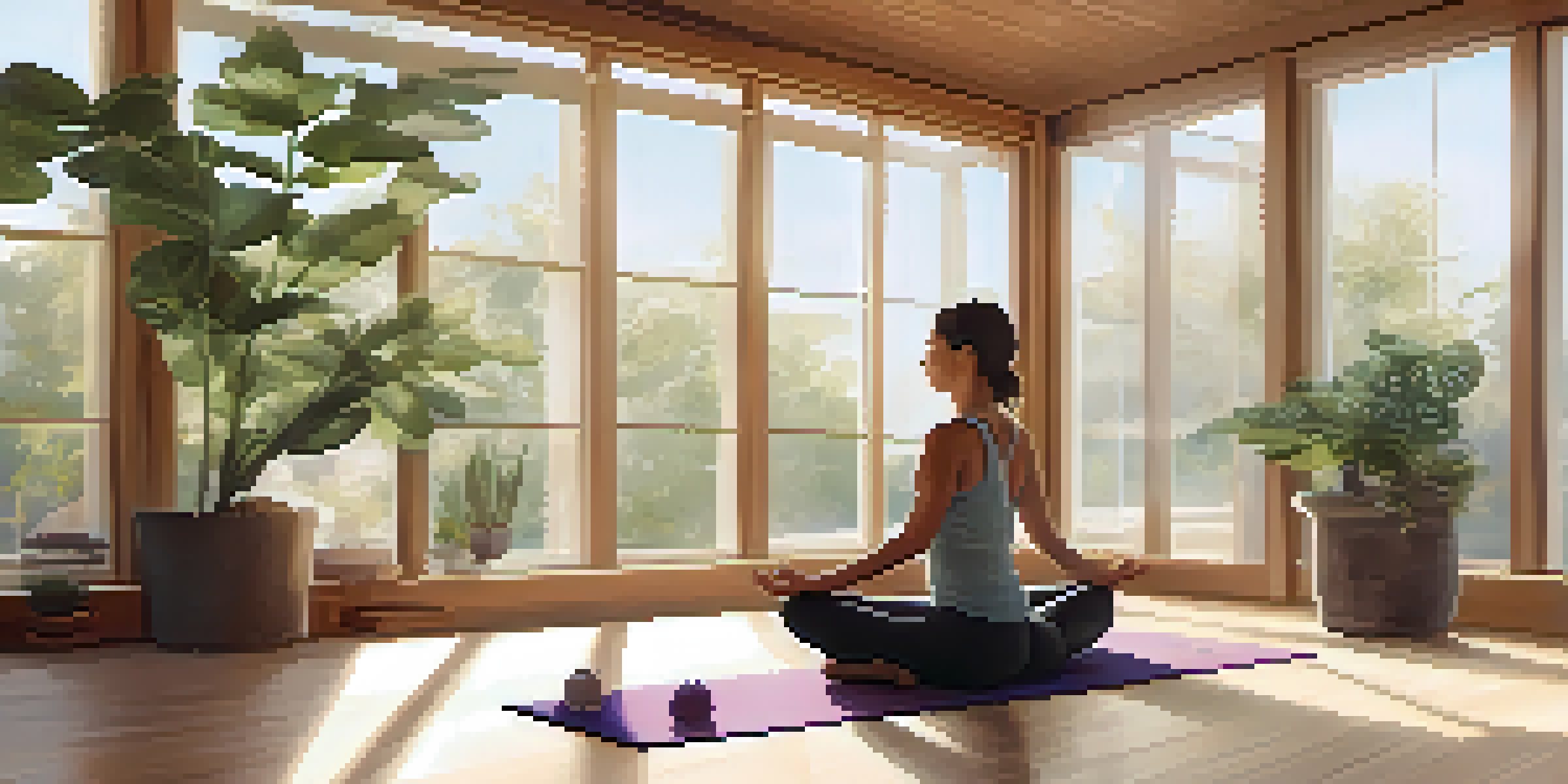Mindful Movement: Yoga Poses to Cultivate Awareness

Understanding Mindful Movement and Its Benefits
Mindful movement is the practice of being fully present in the moment as you move your body. It involves paying attention to your breath, sensations, and thoughts without judgment. This approach not only enhances your physical practice but also cultivates mental clarity and emotional stability.
Mindfulness isn't difficult. We just need to remember to do it.
Engaging in mindful movement can lead to numerous benefits, including reduced stress, improved flexibility, and increased body awareness. When you focus on your movements, you're more likely to notice how certain poses affect your thoughts and feelings. This awareness can help you make better choices in your practice and daily life.
Ultimately, the goal of mindful movement is to create a deeper connection between the mind and body. By integrating awareness into your yoga practice, you can foster a sense of peace and calm that extends beyond the mat.
Getting Started with Mindful Movement
To begin your journey into mindful movement, create a space that feels comfortable and inviting. This could be a quiet room in your home, a peaceful outdoor setting, or even a corner of a bustling park. The key is to find a place where you can focus without distractions.

Before you dive into yoga poses, take a few moments to center yourself. Close your eyes, take deep breaths, and set an intention for your practice. This could be something simple like 'I will focus on my breath' or 'I will embrace my feelings today.' Setting an intention helps to anchor your awareness.
Mindful Movement Enhances Awareness
Practicing mindful movement cultivates a deeper connection between the mind and body, promoting mental clarity and emotional stability.
As you start practicing, remember to move at your own pace. Listen to your body and honor its limits. Mindful movement is not about achieving perfection; it's about noticing how you feel and allowing yourself to be present in each moment.
The Power of Breath in Mindful Movement
Breath is a crucial component of mindful movement, especially in yoga. It serves as an anchor that keeps you grounded and present. When you consciously control your breath, you can enhance your focus and deepen your awareness during each pose.
The mind is everything. What you think you become.
Try synchronizing your breath with your movements. For example, inhale as you raise your arms overhead and exhale as you fold forward. This rhythmic connection between breath and movement creates a fluid experience that helps you stay grounded in the moment.
Remember, if your mind starts to wander, gently bring your focus back to your breath. This practice of returning to your breath can be a powerful tool for cultivating mindfulness, both on and off the mat.
Gentle Yoga Poses to Enhance Mindfulness
Certain yoga poses are particularly effective for cultivating mindfulness. For instance, Child's Pose is a gentle way to invite relaxation and introspection. As you settle into this pose, focus on your breath and allow any tension to melt away.
Another great pose for mindfulness is Tree Pose. Balancing on one leg encourages concentration and strengthens your connection to the ground. As you practice, pay attention to how your body feels and how your mind responds to the challenge of balance.
Breath Anchors Your Practice
Consciously controlling your breath during mindful movement helps enhance focus and deepen awareness in each pose.
Lastly, consider incorporating Forward Fold into your routine. This pose invites a sense of surrender and release, making it a perfect moment to check in with yourself. Feel the stretch in your hamstrings and allow your head to hang heavy, releasing any built-up stress.
Embracing Stillness with Meditation
Incorporating stillness into your mindful movement practice can deepen your overall awareness. After your yoga session, take a few moments to sit in silence and meditate. This time allows you to reflect on your practice and notice any shifts in your thoughts and feelings.
Meditation can take many forms, from focusing on your breath to visualizing a peaceful scene. It doesn’t have to be lengthy; even a few minutes can create a profound impact on your mindfulness journey. Start small, and gradually increase the duration as you grow more comfortable.
The key is to remain open and curious during this time of stillness. Notice any sensations, thoughts, or emotions that arise without judgment. This practice of observation can enhance your self-awareness and help you cultivate a deeper sense of peace in your everyday life.
Creating a Mindful Movement Routine
Developing a mindful movement routine can help you integrate these practices into your daily life. Start by setting aside dedicated time each week for yoga and meditation. Consistency is key, as it allows you to build a habit that fosters growth and self-discovery.
You might choose to practice in the morning to set a positive tone for your day, or in the evening to unwind. Whatever time you choose, ensure it feels right for you. Remember, the goal is to cultivate a practice that resonates with your needs and lifestyle.
Create a Routine for Mindfulness
Establishing a consistent mindful movement routine integrates yoga and meditation into your daily life, fostering growth and self-discovery.
As you establish your routine, don't be afraid to experiment with different poses and meditation techniques. The more you explore, the more you’ll discover what works best for you, leading to a deeper sense of mindfulness and connection.
The Journey of Mindful Movement
Mindful movement is a journey rather than a destination. As you explore yoga and meditation, allow yourself to be patient and compassionate. Each practice is an opportunity to learn more about yourself and to cultivate awareness in new ways.
It's important to remember that it's okay to have off days. Some days, your mind might feel cluttered, and other days, you may find it easy to connect with your breath. Embrace these fluctuations as part of your journey, knowing that every moment on the mat contributes to your growth.

Ultimately, the practice of mindful movement can enhance your overall well-being. By staying present and aware, you can navigate life's challenges with greater ease and resilience, allowing you to cultivate a sense of peace in both your body and mind.